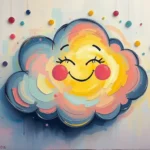
Have you ever woken up from a dream, heart racing, mind swirling, and wondered what it all meant? Dreams can feel like a chaotic tapestry of emotions and experiences, woven together in ways that can be both baffling and enlightening. In this journey through the enigmatic world of dreams, we will explore the symbolism, experiences, and personal growth that arise from our nightly narratives. You may find that these dreams are not just random snippets of our subconscious but rather messages waiting to be uncovered—like a treasure chest full of insights about our waking lives.
As we delve into the art of dream interpretation, think of it as a conversation with your inner self. Each symbol and scenario is a reflection of your thoughts, feelings, and experiences. By gaining insight into these hidden narratives, you can unlock the wisdom they hold. So, let’s embark on this exploration together, and perhaps, by the end, you’ll feel a little more connected to your own dreams.
Dream Symbols: The Language of the Subconscious
To decipher the messages embedded in your dreams, it’s essential to understand symbol analysis. Dreams often communicate through symbols that can be deeply personal or culturally universal. These symbols can represent emotions, fears, desires, or even past experiences. By recognizing the key concepts in your dreams, you can begin to unravel their meaning.
For example, consider the symbol of water. In many cultures, water signifies emotion and the unconscious mind. A calm lake might represent tranquility, while a turbulent sea could signify emotional turmoil. Similarly, flying often symbolizes a desire for freedom or an escape from life’s pressures. In contrast, falling can evoke feelings of vulnerability or loss of control.
Let’s delve deeper into three symbols commonly found in dreams:
-
Doors: Often representing opportunities or transitions, a door in your dream may indicate a choice that lies ahead. If the door is locked, it might signify feelings of being trapped or blocked from pursuing what you truly want.
-
Animals: Animals in dreams can embody various emotional states. A lion might represent courage and strength, while a snake could symbolize hidden fears or treachery. The specific animal and your feelings toward it can provide deeper insights.
-
Chase: The act of being chased in a dream often points to unresolved anxieties or fears. It may reflect something in your waking life that you are avoiding or running away from.
Understanding these symbols is just the beginning. The real magic happens when you contextualize them within your own life and experiences.
Dreamscapes of Experience: Tales from the Night
Now, let’s explore some common dream scenarios that many people encounter. Each scenario can reveal a different facet of your psyche and provide valuable insights into your life’s journey. Here are a few scenarios to consider:
-
The Test or Exam: You find yourself unprepared for a test or exam in your dream. This common scenario often symbolizes feelings of inadequacy or anxiety about performance. It may reflect your fears around a current project or situation where you feel unprepared or scrutinized. Embrace this dream as an opportunity to address any self-doubt you might be facing in your waking life.
-
Losing Teeth: Dreaming of losing teeth can be alarming and often signifies feelings of powerlessness or fear of aging. In many cultures, losing teeth is associated with loss of control or a fear of change. If this dream reoccurs, it might be time to reflect on your self-image and consider whether you are experiencing changes in your life that are challenging your sense of identity.
-
Being Naked in Public: This dream can provoke a strong emotional response and often symbolizes vulnerability or exposure. It may reflect feelings of inadequacy or fear of judgment from others. If you find yourself in this situation, ask yourself: What aspects of my life do I feel exposed about?
-
Flying: While flying can evoke feelings of joy and freedom, it can also signify a desire to escape from something troubling in your life. If you feel weightless and carefree, this could represent a desire for liberation. However, if you struggle to maintain flight, it may indicate obstacles you feel are preventing you from achieving your goals.
-
Being Chased: As mentioned earlier, being pursued in a dream often mirrors your waking life anxieties. Who or what is chasing you? This dream calls for introspection—what are you running from? Consider facing the source of your fear instead of avoiding it, as this may lead to profound personal growth.
As you reflect on these scenarios, think about how they resonate with your current life circumstances. What emotions do they evoke? What insights do they offer?
A Journey of Personal Growth: Transforming Insights into Action
Dreams are not merely fleeting experiences; they offer a pathway for personal growth. By engaging with the insights from your dreams, you can embark on a meaningful journey toward self-discovery and transformation. Here are some practical ways to harness the power of your dreams for personal development:
-
Keep a Dream Journal: Start recording your dreams upon waking. Write down every detail you remember, including emotions, symbols, and scenarios. Over time, you may begin to notice patterns that can guide you in understanding your subconscious thoughts.
-
Reflect on Your Emotions: After journaling, take time to reflect on how the dream made you feel. Did you wake up anxious, joyful, or confused? Understanding your emotional responses can provide clarity about what your subconscious is trying to communicate.
-
Set Intentions: Use your dreams as a springboard for setting intentions in your waking life. If a dream highlighted a fear, consider taking small steps toward facing that fear. If it illuminated a desire for freedom, think about ways to incorporate more joy and autonomy into your daily routine.
-
Engage in Creative Expression: Sometimes, expressing your dreams through art, writing, or movement can provide additional insights. Create a painting or a poem inspired by a dream—this can help you tap into emotions and themes that may not surface through traditional reflection.
-
Seek Support: If you find that your dreams are particularly distressing or recurring, consider speaking with a therapist or counselor experienced in dream interpretation. They can help you navigate the complexities of your subconscious and offer guidance tailored to your unique experiences.
As you navigate this journey of self-discovery through your dreams, remember that each dream is a piece of your personal narrative. By embracing the messages they carry, you can cultivate a deeper understanding of yourself and your life’s path.
In conclusion, dreams are not just nighttime stories; they are windows into our souls. When you begin to see them as such, you open yourself up to a wealth of knowledge and insight. So, the next time you wake from a dream that lingers in your mind, take a moment to reflect on what it might be trying to tell you. Every dream holds the potential for growth, and with each interpretation, you step closer to truly understanding the beautiful, complex tapestry that is your life. Embrace your dreams; they are the whispers of your soul seeking to be heard.







